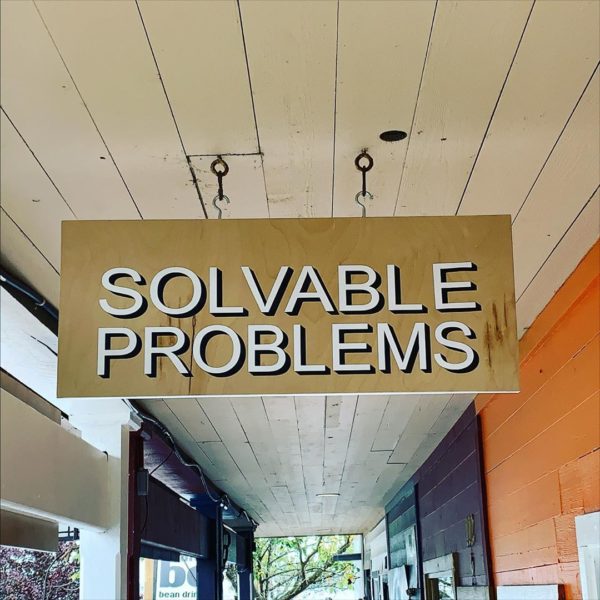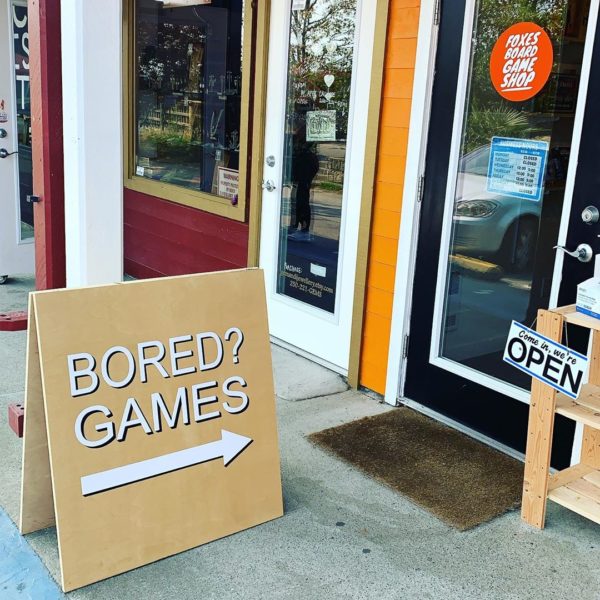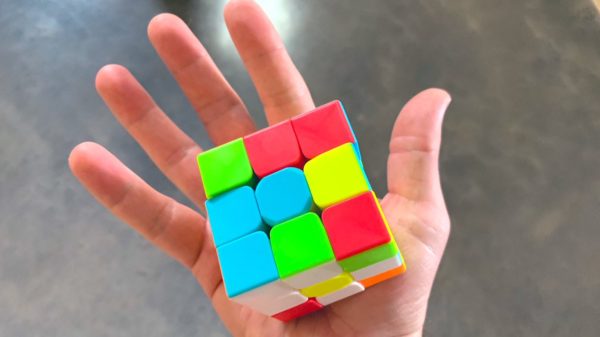I was delighted to see that Foxes Board Game Shop on Salt Spring Island was inspired by my post in praise of solvable problems to make a new sign for their store. They are very good at signs, indeed:
Speaking of bored games, I’m at the point in quarantine where I’ve purchased yet another Rubik’s Cube:
I love this one. Buttery action and stickerless. Only trouble is, I’m a bit red/green colorblind, so the low contrast is a little hard on my eyes in low light. Worth $7 for sure.
Speaking of The Cube, there’s been a bunch of Cube-related stuff come out since my February post, most notable of which is the excellent 40-minute documentary, The Speed Cubers, on Netflix:
I literally do not know how these kids do it. I have the algorithms memorized and I’m down to around a 2 1/2 minute average on my solve time, but I can’t imagine being able to do it any quicker than one minute or even 30 seconds, let alone 7 seconds. Blows my mind.
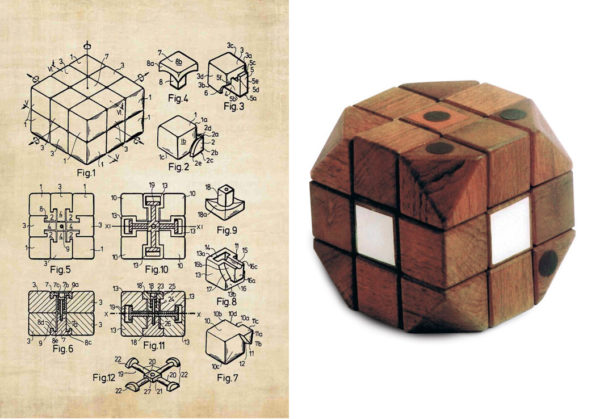
Here’s the patent and original prototype by the cube’s inventor, Erno Rubik. He has a new book out called Cubed: The Puzzle of Us All, and was profiled by The New York Times. Loved the description of tinkering in his childhood bedroom, which resembled “the inside of a child’s pocket, with crayons, string, sticks, springs and scraps of paper scattered across every surface.”
These days, he spends his time reading sci-fi, playing table tennis, gardening and tending to his cactuses: “They have wonderful flowers and long life spans.” He is not done with the cube. He still reflects on its possibilities — not an improvement to its design, but on its potential applications.
“I am not doing it because I want to become a champion, or because I am expecting new discoveries from playing it. At the same time, I am expecting some new potentials for the basic ideas,” Rubik said. “I see potentials which are not used yet. I’m looking for that.”
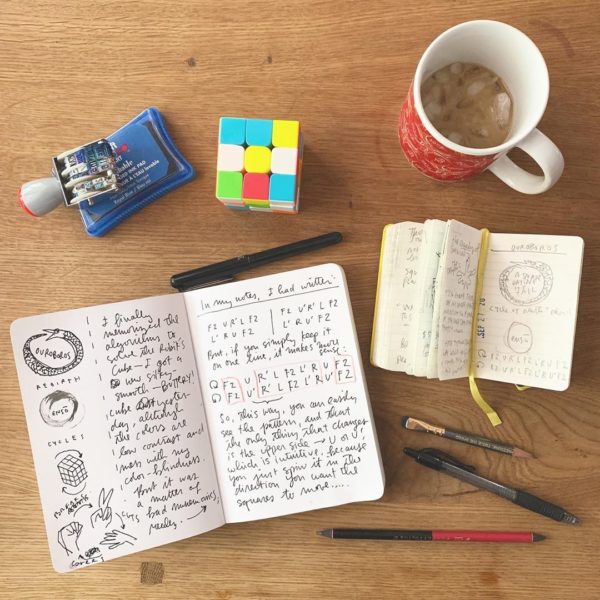
I had a breakthrough recently where I was finally able to solve the (longest) algorithm for moving the corner cubes in the top row counterclockwise or clockwise. Turns out the problem was my badly copied notes, which broke the algorithm into two lines and made it seem more complicated than it is:

A dumb mistake with a good lesson: while copying notes by hand is worthwhile for retention, re-copying them might be even more worthwhile for comprehension.
(Is this the nerdiest post I’ve ever written? Quite possibly.)
